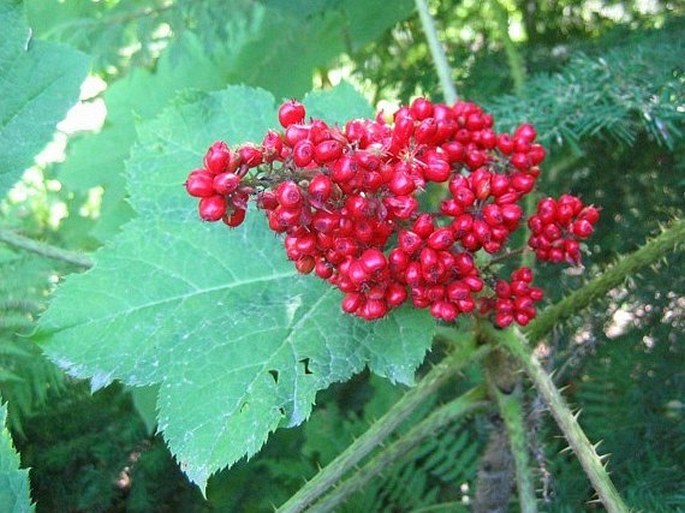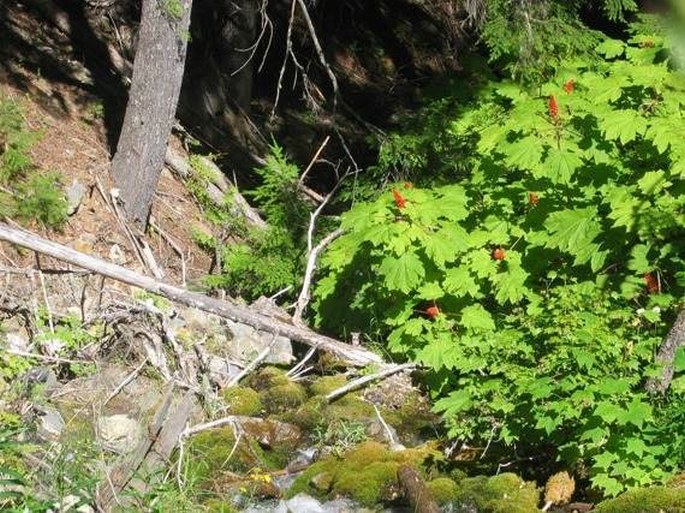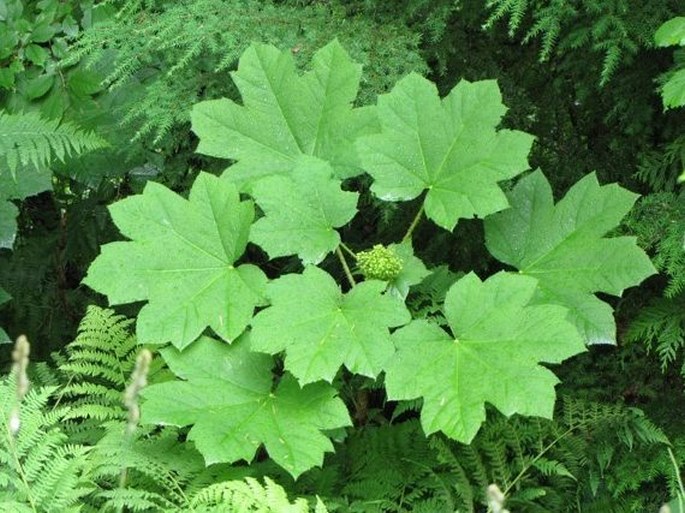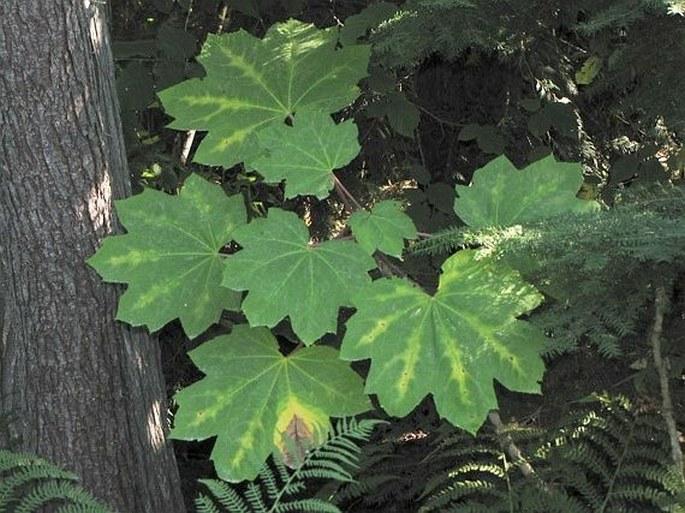Syn.: Aralia erinacea Hook., Aralia occidentalis Schltdl. ex Ledeb., Echinopanax horridus (Sm.) Decne. et Planch. ex Harms, Fatsia horrida (Sm.) Benth. et Hook. f., Horsfieldia horrida (Sm.) Seem., Panax horridus Sm., Ricinophyllum americanum Pall. ex Ledeb., Ricinophyllum horridum (Sm.) A. Nelson et J. F. Macbr.
Family: Araliaceae Juss.

Distribution: North American species found from Alaska through Yukon, British Columbia, southwestern Alberta and Ontario and in US, in Idaho, western Montana, Washington and Oregon; rare in Michigan.
Ecology: Iconic species of Northwest damp forests, close to water or marshy areas, tolerant to shade. Grows at elevations from sea level to about 1600 m. Blooms from May to July.

Description: Deciduous shrub, spiny, coarse, strong smelling, 1–3(–5) m tall, from shallow roots, suckering. Stems erect to sprawling, thick, with strong spines, seldom branched. Leaves alternate, at the top of stem, broadly maple-leaf-like, 10–40 cm wide, spiny ribs beneath, long spiny petioles. Inflorescence terminal, in pyramid shaped panicle, 10–25 cm long; flowers pentamerous, numerous, greenish white, 5–6 mm, short pedicels. Fruit is bright red berry-like drupe, slightly compressed, 4–6 mm, in showy clusters, 2–3 seeds per drupe, persist through winter.
Threat and protection: Michigan lists this plant as threatened.
Note: This plant had many uses for native tribes. Berries are not edible. Young stems can be eaten; some people are allergic to the spines; aromatic roots were used with tobacco for smoking; Devil’s club tea had various medicinal uses.




These images were taken in Canada, British Columbia, Burton (by Karel Bergmann: July, August 2011), and British Columbia, Vancouver Island, Cathedral Grove (by Vít Grulich: August 3, 2007).


